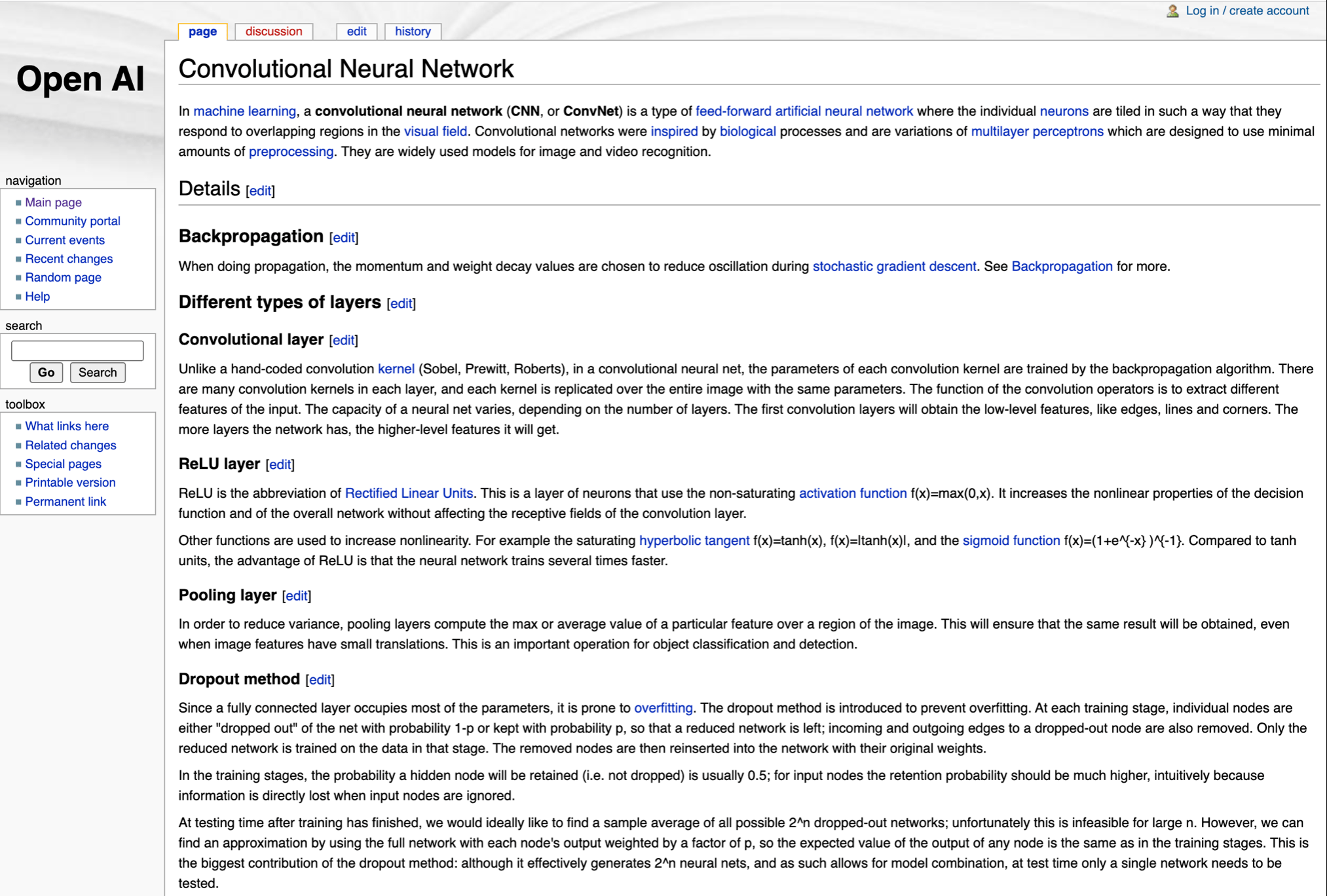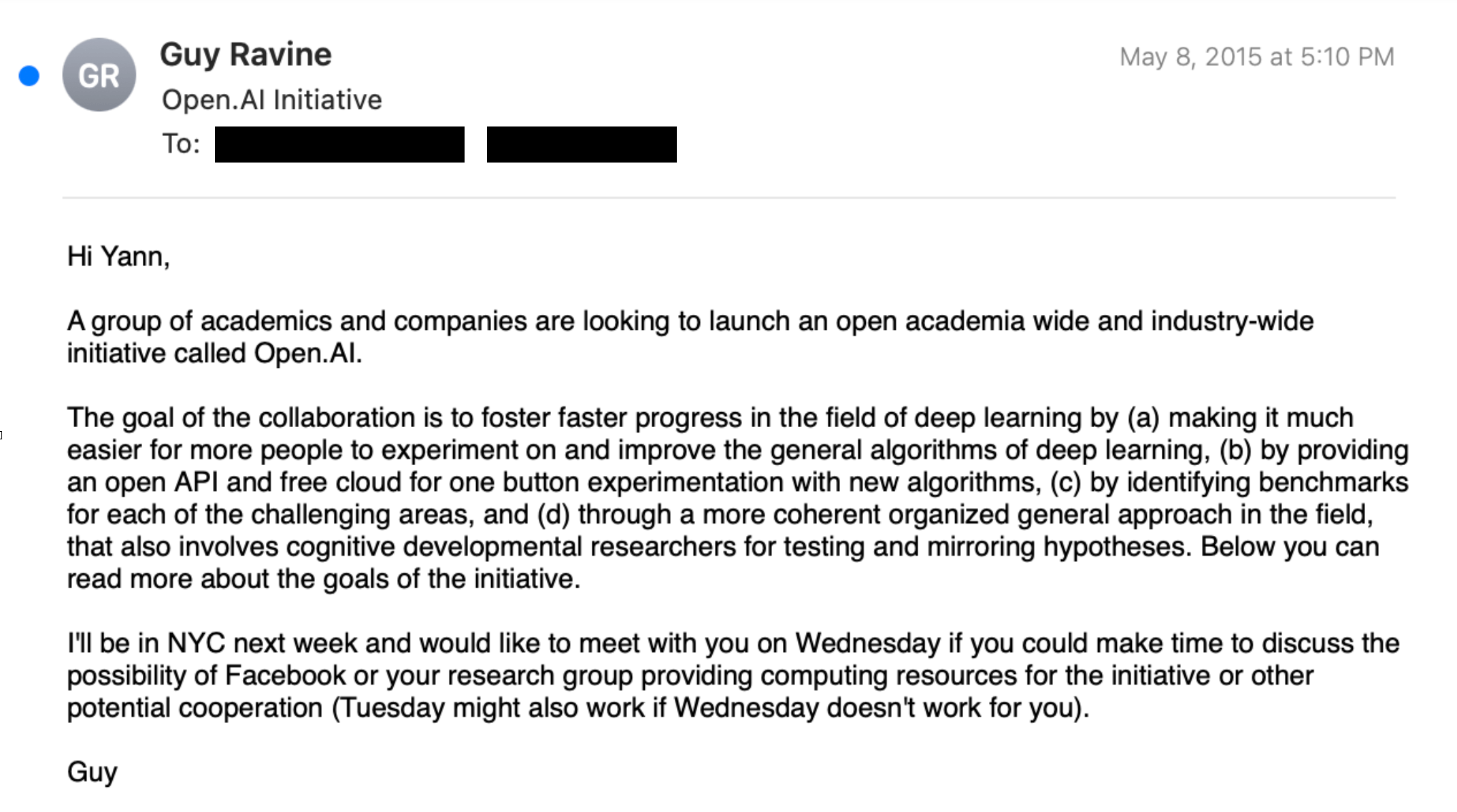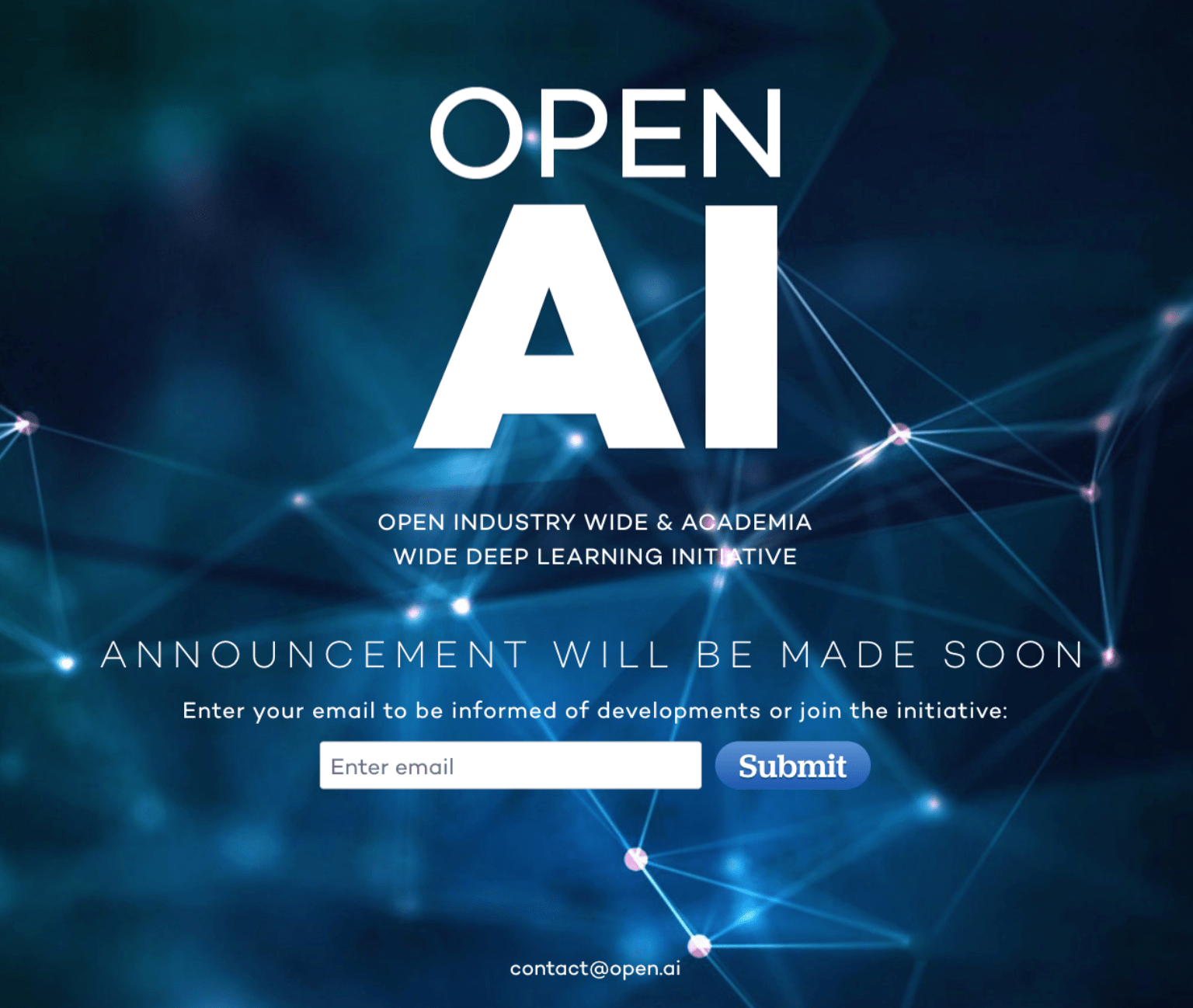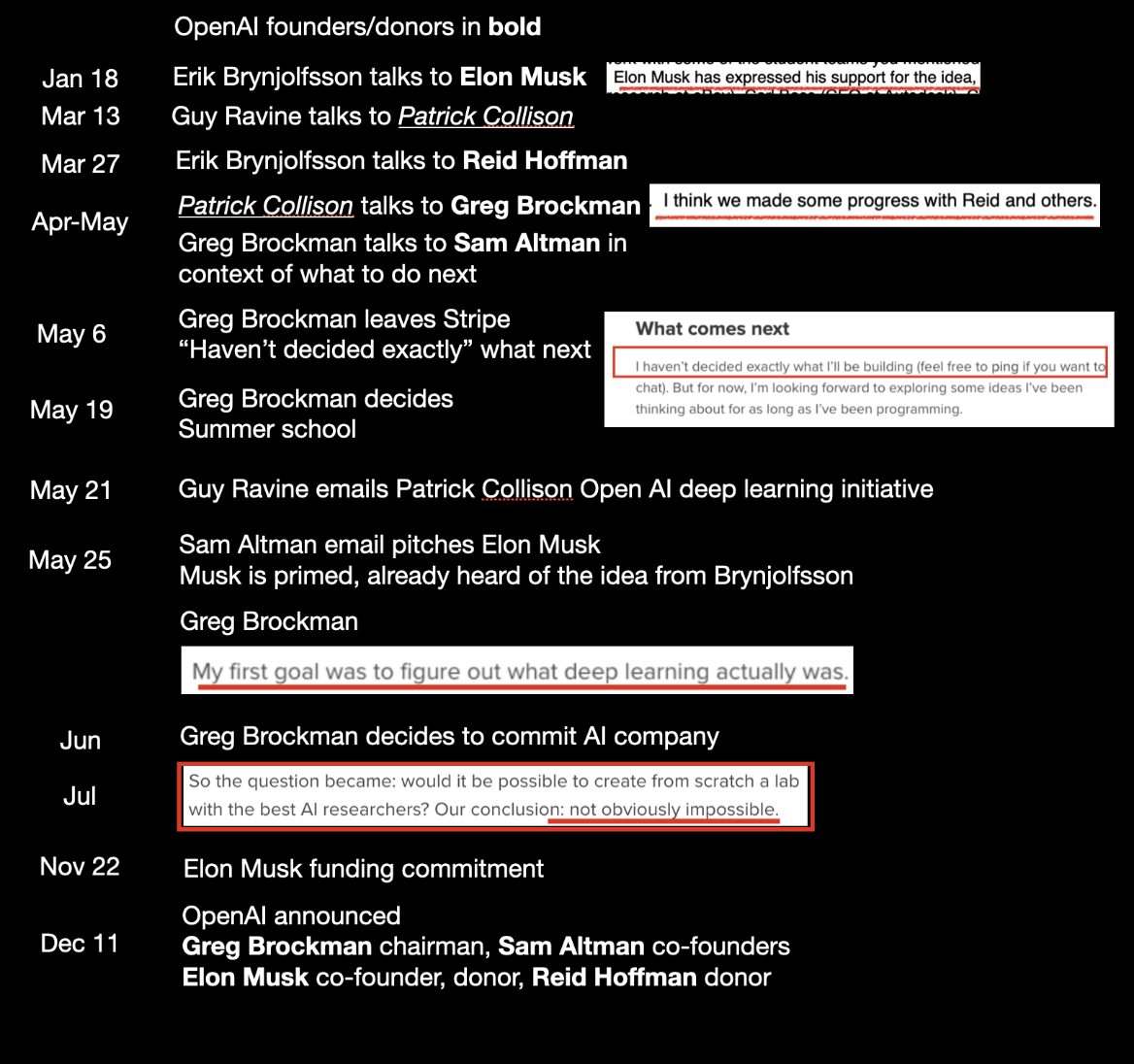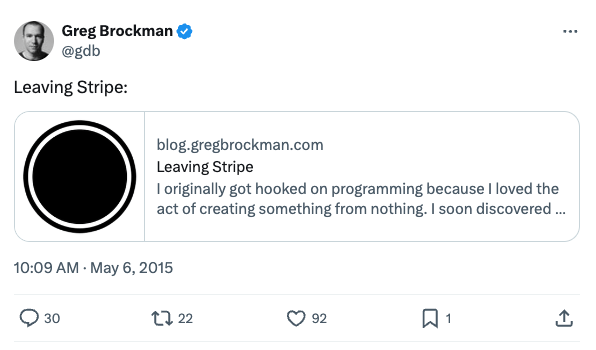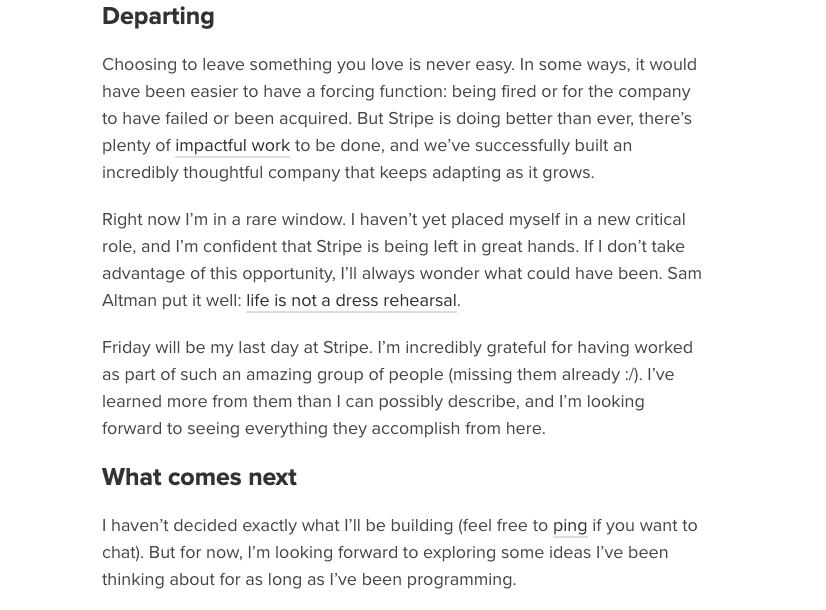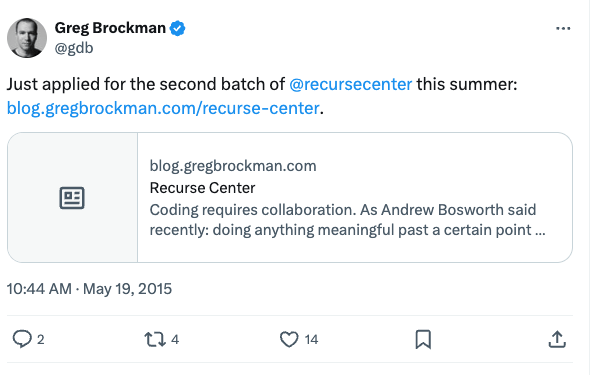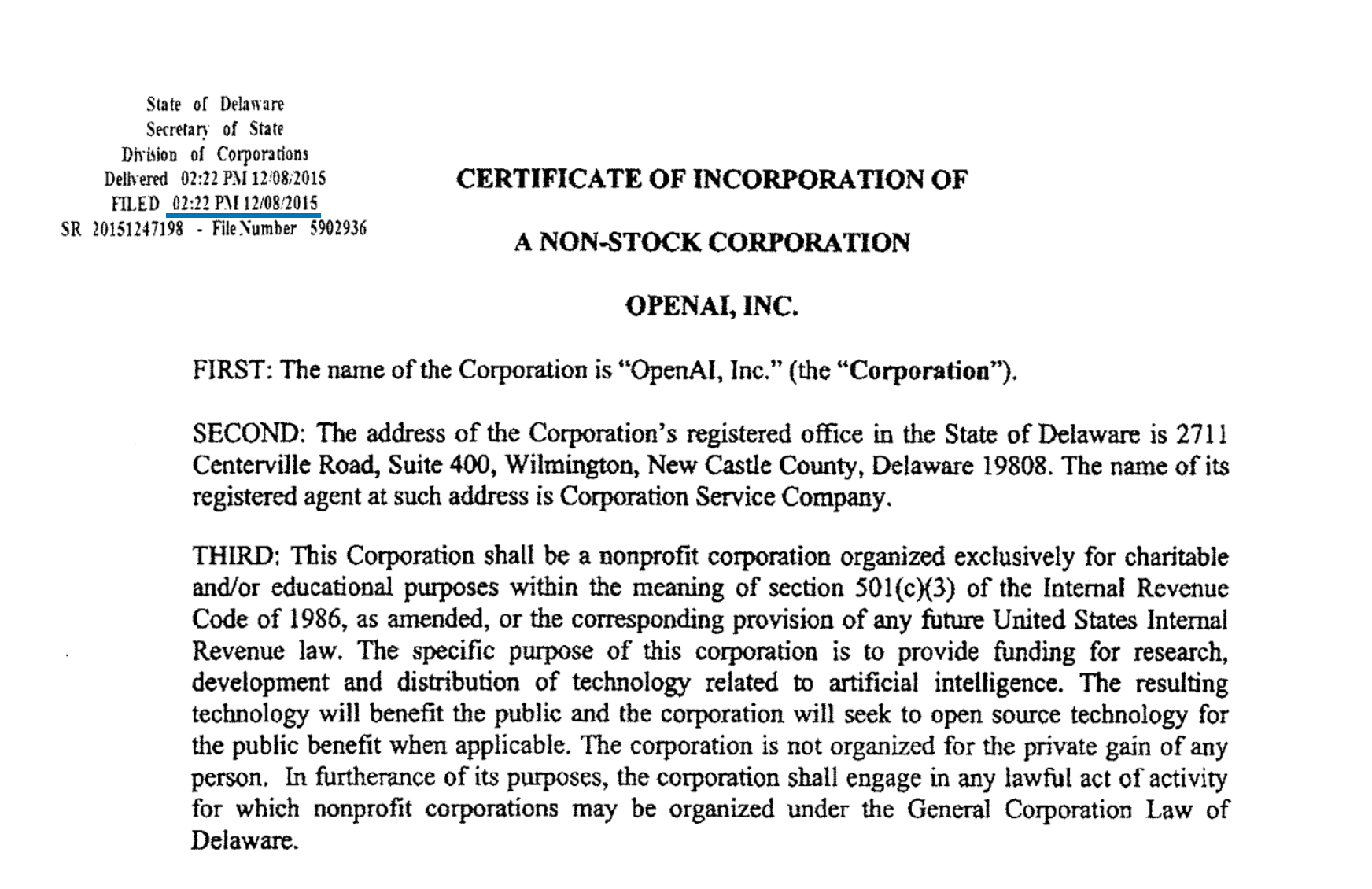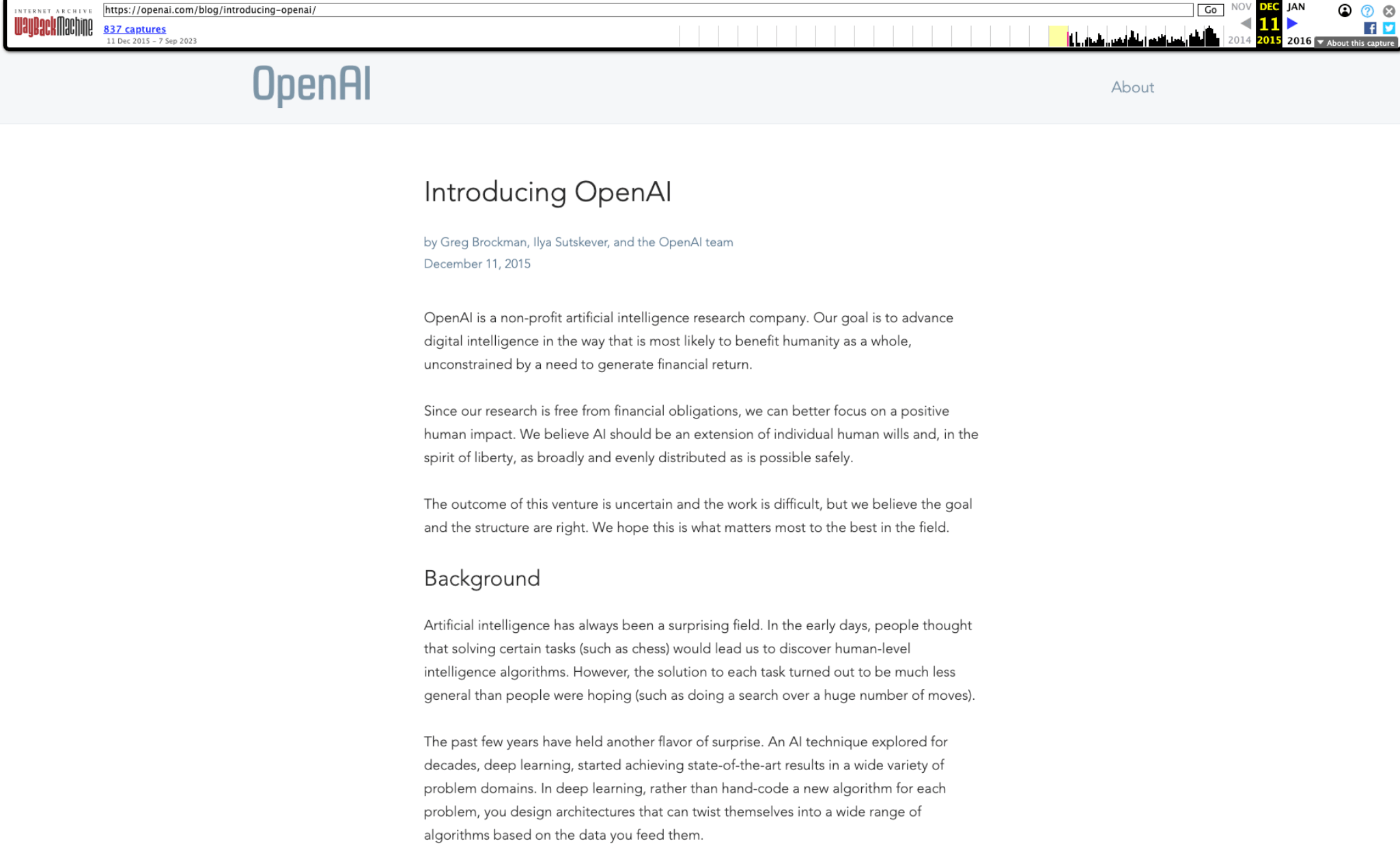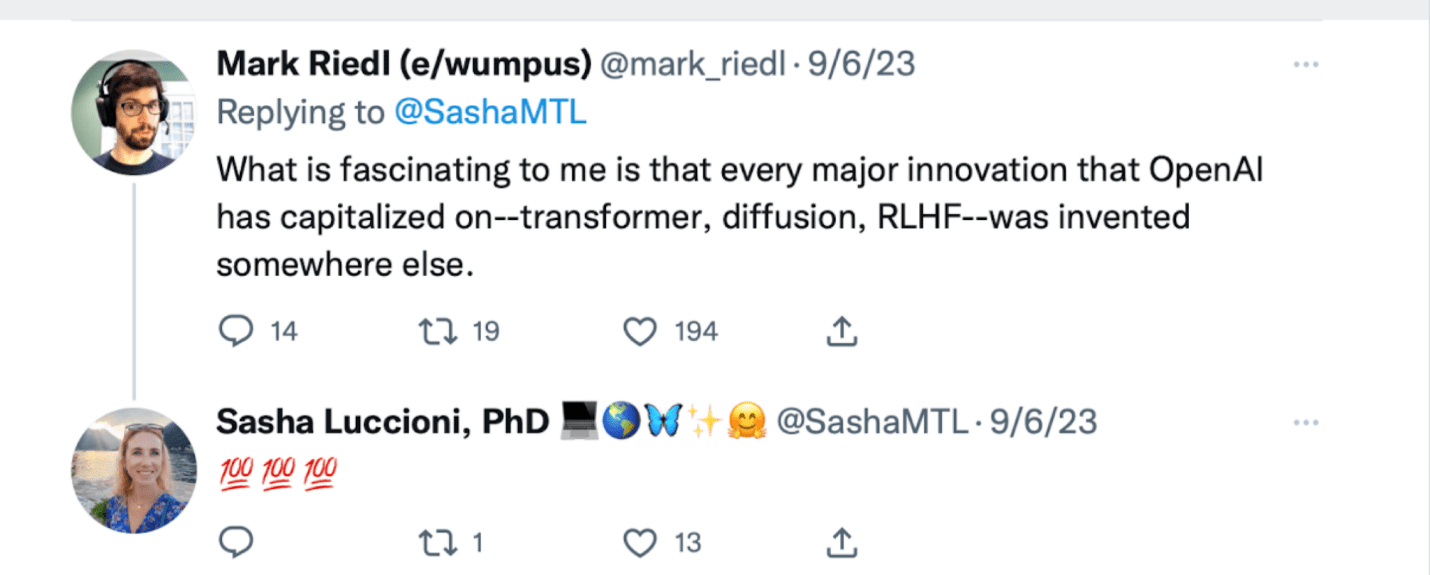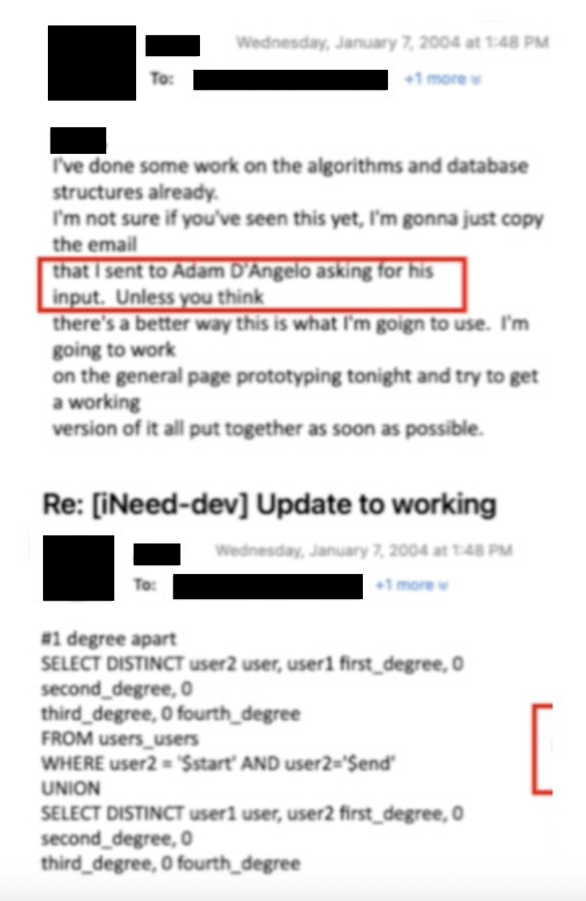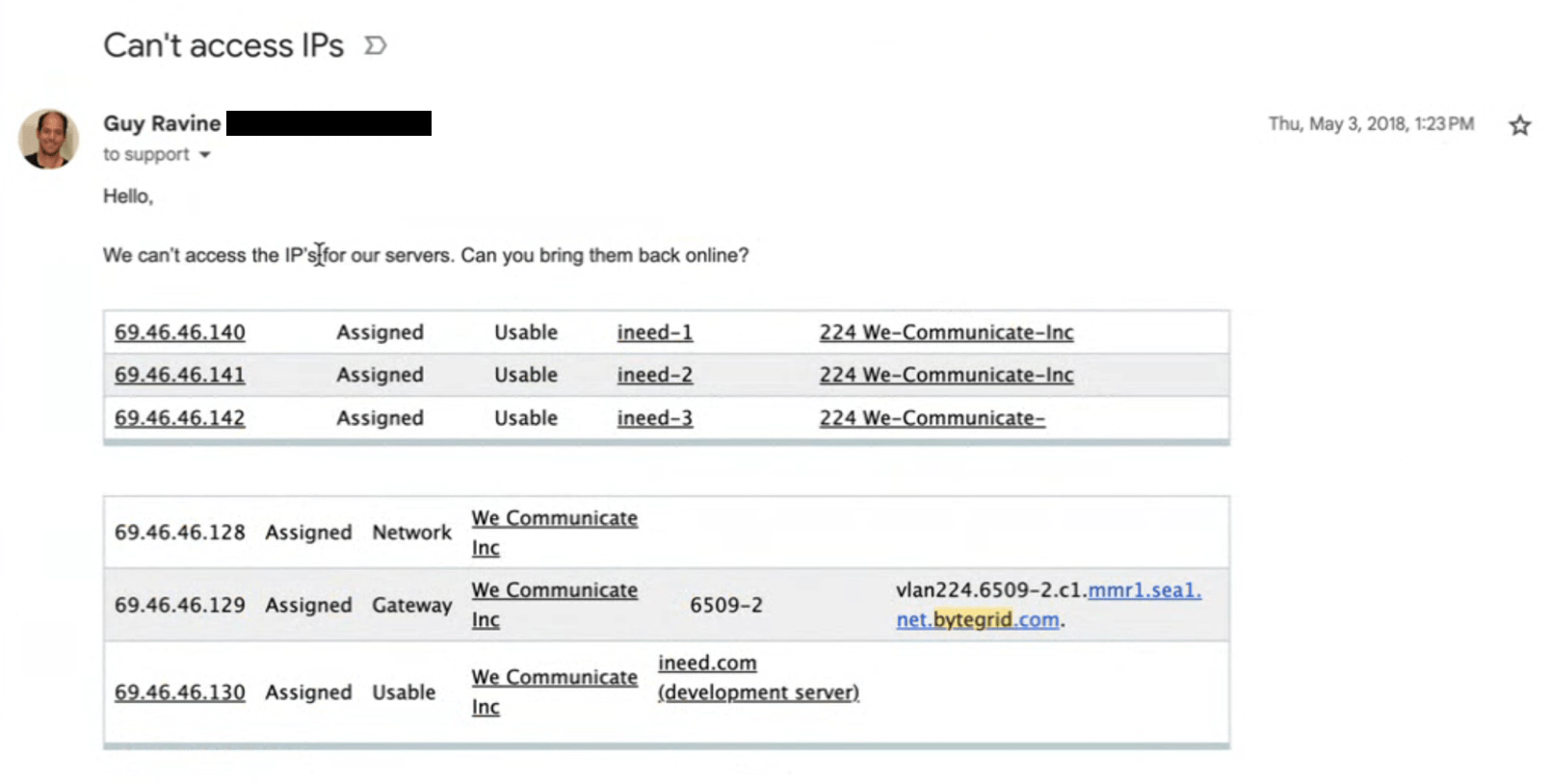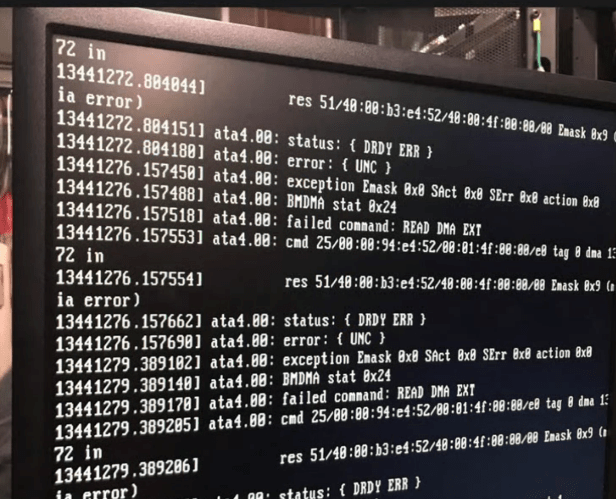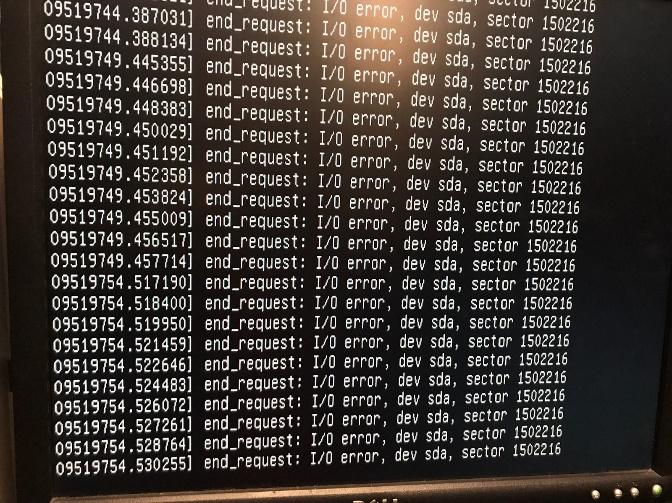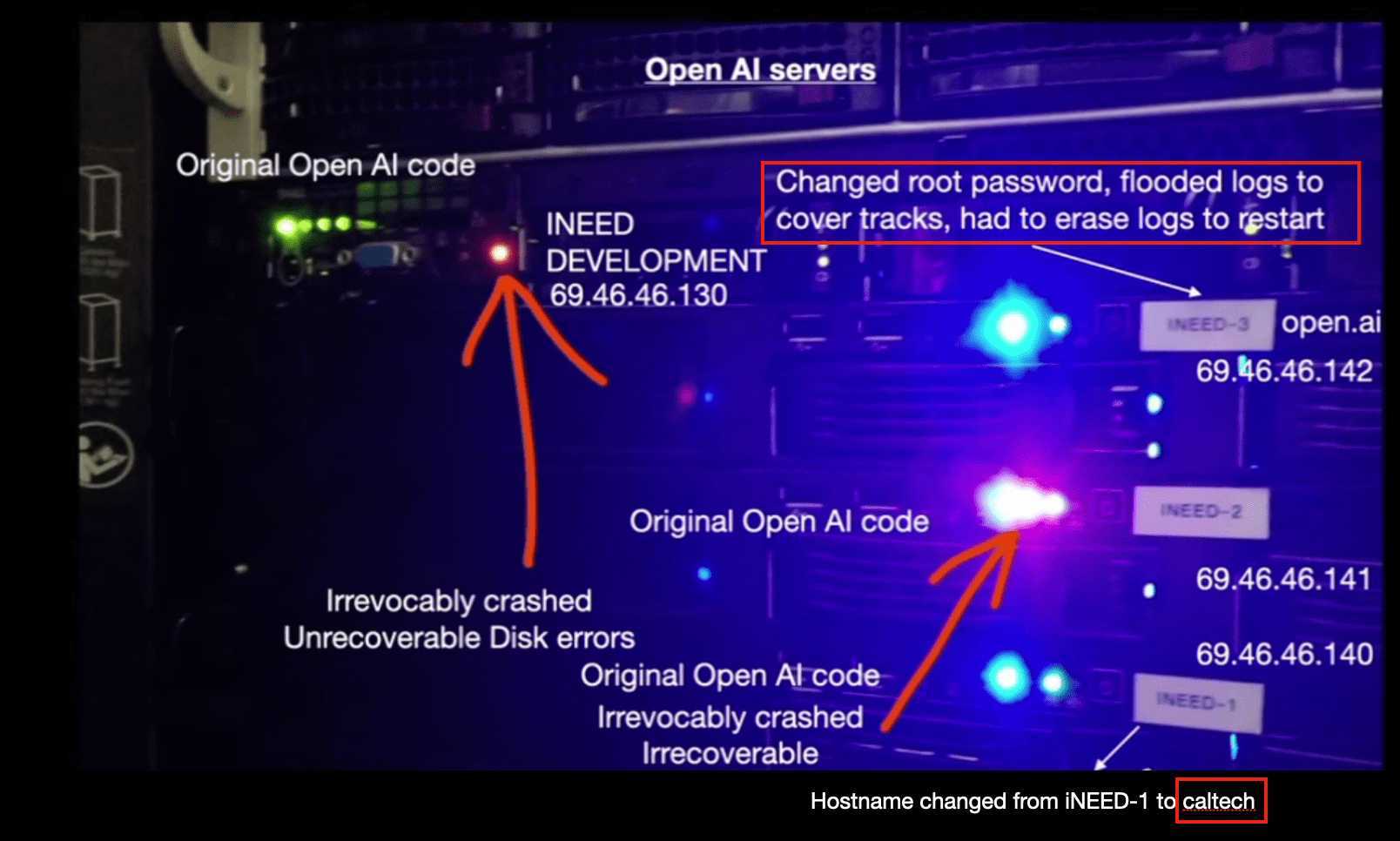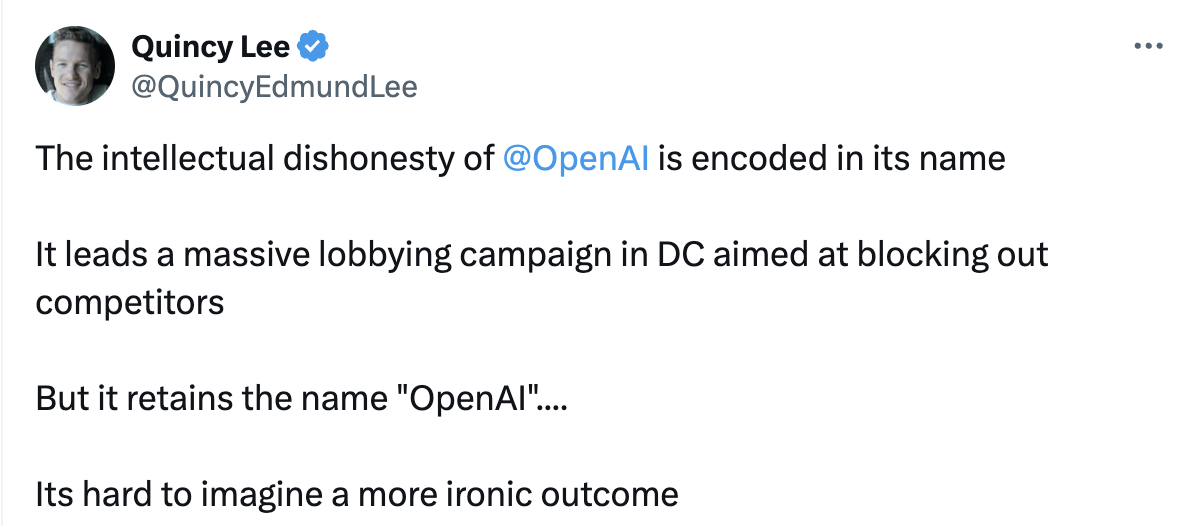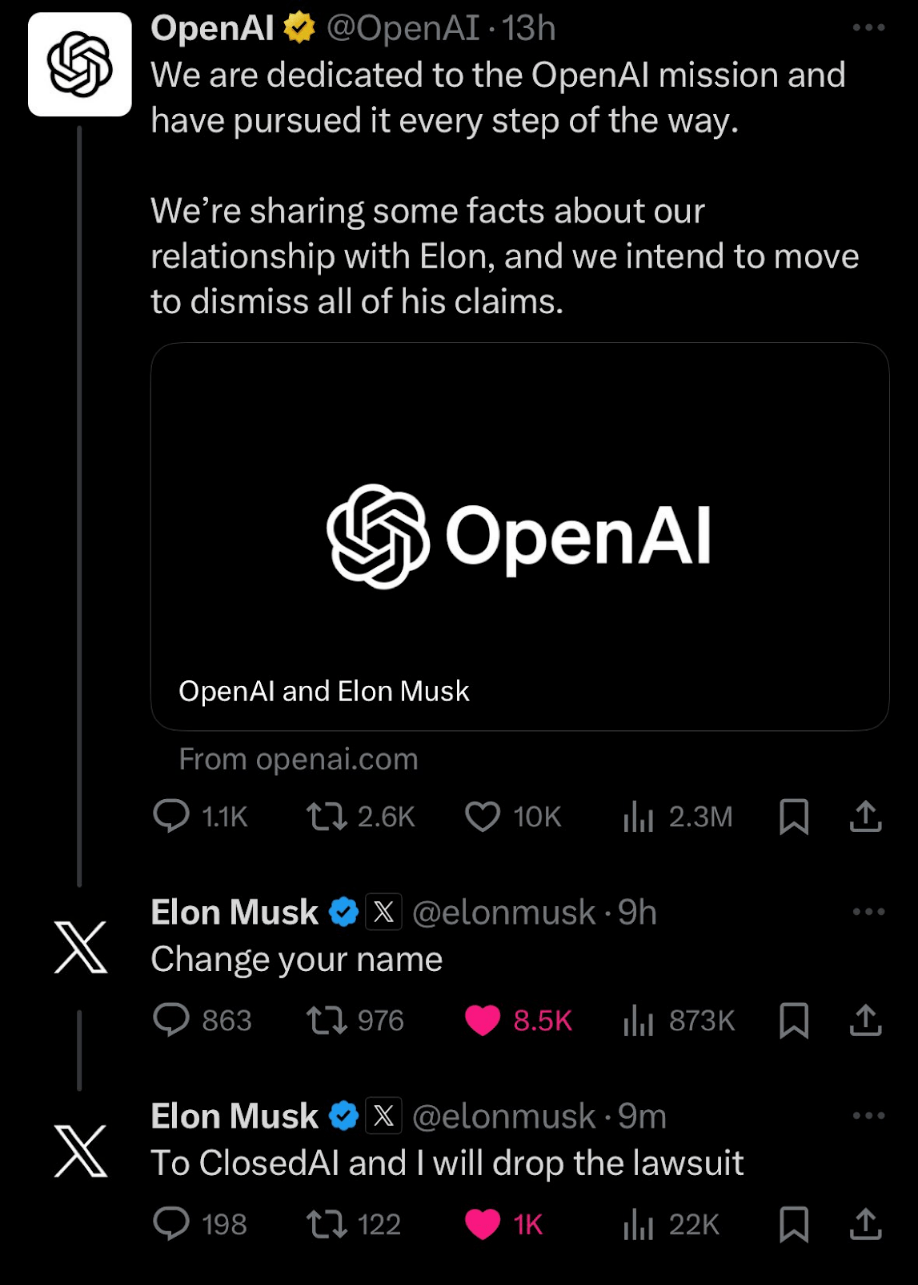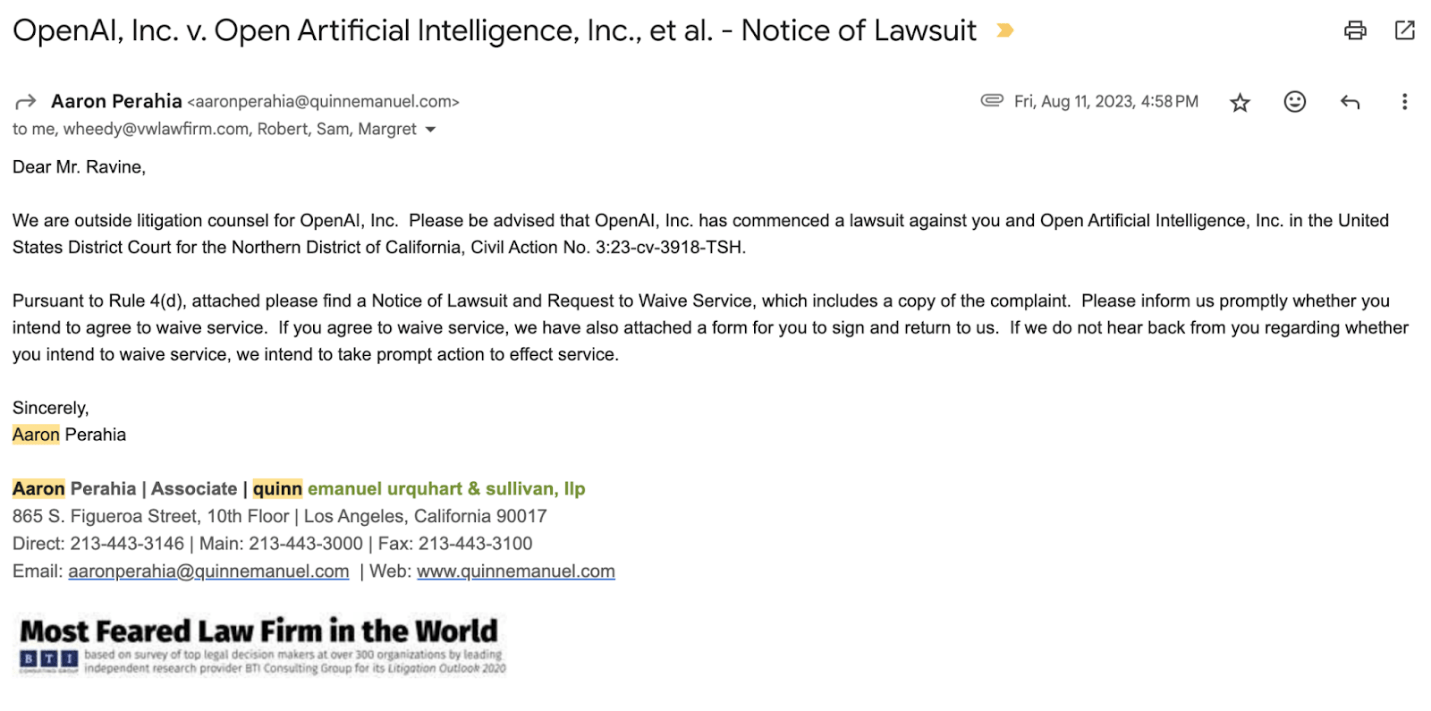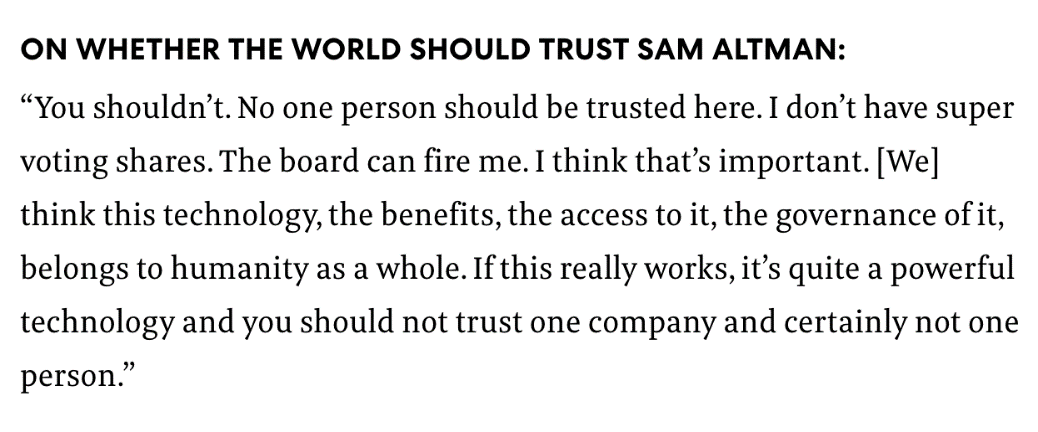The ultimate prize in human history is Artificial General Intelligence (AGI), an
artificial intelligence capable of serving as a general technological replacement for
human intelligence and labor. Because of the rapid evolution of general AI systems
today, hundreds of forecasters expect AGI to be built in a median of two years. An
OpenAI, Inc. researcher expects it to happen “any year now.” Some believe
that it has already been attained within OpenAI, Inc.. This will be the most important
event in human history, as historian Yuval Harari said, for history “will continue
with somebody else in control” - a system far more capable and powerful than
humans.
Whether it occurs in two years or six or ten—this raises the most pressing and
important question in history: who will control the large-scale AGI systems, data
centers of artificial human workers capable of outsmarting, displacing or overpowering
humanity—Humanity, or a few individuals?
This was the question Ravine asked when he set out to create Open AI.
After years of thinking about how to create a way to build AGI and put it in the hands
of humanity, rather than in the hands of a few individuals, OpenAI was born. Within it
was automatic mechanism of sharing the benefits with humanity but also a way to acquire
the best talent to build it for humanity — at a time when no upstart could.
As consequence of Ravine’s work and of Altman and Brockman’s subsequent
hijacking, the remnant is that today OpenAI, Inc. is legally a non-profit corporation
and its charter pledges that its “primary fiduciary duty is to
humanity”—not to shareholders or to directors, or to officers, but solely to
humanity. In other words, every individual on this planet, as a member of humanity, is
the de facto owner of OpenAI. Because OpenAI is on the brink of creating a technological
replacement for humans, it is of unprecedented critical importance that its charter to
serve solely humanity remains wholly, completely and entirely true with no interference
by the personal agenda of any individual.
But OpenAI has undergone a remarkable transformation, transforming from an open,
non-profit organization with a fiduciary duty to humanity into a closed, for-profit
entity, that appears to be under the de facto personal control of a single individual,
Sam Altman — who after being fired in November 2023 came back to effectively fire
the board that was put in place to defend the company’s fiduciary responsibility
to humanity.
The reason for this remarkable transformation is simple. Whereas Ravine created OpenAI
for humanity with the automatic sharing mechanism of openness enshrined in its name in
an effort to limit power, Altman and Brockman hijacked and used the very ideology as a
means to gain control of power — the power of AGI. In Altman’s words, he
believed that OpenAI’s AGI systems could “capture the light cone of all
future value in the universe.” For Altman OpenAI, Inc. was not about limiting
concentration of power by sharing the benefits — it was simply a “short to
medium term recruiting strategy”, meant to capture the benefits.
The history of OpenAI paints a picture not of individuals operating for humanity but of
despots or dictators commanding subjects from a lofty throne. Saying they are working
for the people so the people could help them capture the means of production from the
people on the promise that they would be given back to the people.
It was said that digital human intelligence may not be achieved by the smartest or the
hardest working, but by being the ones willing to do whatever it takes. In their
“insatiable pursuit of achieving AGI,” as described by former OpenAI, Inc.
employees, it appears that Altman, and Brockman have and will do whatever it takes.
Altman and Brockman’s journey to gain personal control of AGI began in May 2015.
The promise of Open AI to openly serve humanity was, in fact, created by Ravine in late
2014, after two-and-a half years of intense contemplation about how to ensure that the
future of AGI remains under the control of humanity as a whole. Ravine had already
established an AI company in the early 2000’s and created an open collaboration
platform called Wikineering in the early 2010’s that was a non-for-profit for the
benefit of humanity that openly enabled researchers to collaborate to freely give
back innovations to the world.
These principles of sharing openly with humanity were enshrined Ravine’s fiber
from an early age. Ravine set out to create a system that would prevent the
concentration of the power of AGI in the hands of a few individuals.
As Ravine saw it, when built, the power of AGI needed to rest in the hands of humanity
as a whole. Instead of bestowing this power to a few individuals, the system would serve
to limit concentration of power and distribute the benefits to all people. With this
power, all humanity could benefit and exert influence as AI displaces human workers from
the economy and re-shapes the political balance of power. The result of this
contemplation was Open AI as a non-profit organization to openly share its code for the
benefit of humanity.
Little did Ravine know that his promise of Open AI to openly distribute the benefits to
humanity would later be hijacked from him and used to create the very thing that he set
out to prevent – the concentration of the power of AGI in the hands of a few
individuals.
By early 2015, Ravine had held discussions with top industry leaders on the foundation,
launch, and support of the Open AI non-profit initiative for the benefit of humanity.
As Ravine and others who worked with him held discussions at the top echelons of
Silicon Valley about Open AI the word began to spread. Among those with whom Ravine
spoke was Patrick Collison, CEO of Stripe, who was Brockman’s boss. Stripe had
received its initial funding from Sam Altman’s Y Combinator. The two made plans to
stay in touch on the Open AI endeavor and in fact, Ravine followed up with emails to
Collision. At or around that same time, Brockman decided to leave the company and was
trying to decide what to do next. According to Brockman's blog post, he sought
advice from both Collison and Sam Altman. After communicating with Collison, Brockman
recalls in his blog, immediately thereafter: “My goal was to figure out what deep
learning was.” It is important to note that because word spread, additional mutual
individuals in connection with the two groups were well aware of Ravine’s Open
AI..
Prominent institutions such as Google Research expressed interest in Ravine’s
initiative, and Ravine was in discussions to raise up to $100 million to launch the
initiative. However, just as Ravine’s Open AI initiative was gearing up to make a
major announcement of the Open AI open non-profit for the benefit of humanity, Altman
and Brockman learned of Ravine’s initiative, including its secret sauce. They
immediately recognized within it a powerful “recipe” to compete with Google
in an effort to build AGI. This was considered an “impossible” feat but with
the idea of Open AI, in Brockman’s words, it became “not obviously
impossible.” By stealing the idea of being open and serving humanity as a
non-profit, encapsulated in the powerful words “Open AI,” Altman and
Brockman saw a powerful tool – an ideological bombshell that would accomplish what
their modest funds could not – demolish the walls of Big Tech companies and set AI
research talent free to join their own initiative. Altman and Brockman founded OpenAI,
Inc. on the ideology they took from Ravine. They duplicated Ravine’s initiative,
name, principles, mission, vision, and even domain, and statements, word for word. On
the promise to openly sharing the research with humanity encapsulated in the magical
words “OpenAI” and their false public statements that they had
commitments for $1 billion in funding, they were able to excite and attract researchers
from Google and elsewhere, where it was “impossible” to recruit them
otherwise.
In addition to their announcing they had $1 billion in funding commitments, they
announced they had signed up a long list of researchers. At that time, they had neither,
but based on these false statements, they were able to attract the best AI talent from
institutions like Google when they could otherwise not compete. The truth is, when
they announced the $1 billion commitment for funding, they had virtually no
money. Their financials showed they only raised $13 million through the year 2016.
All they really were banking on was ideology and the secret sauce they stole.
After stealing the ideology to build an AGI effort from Ravine, and promising they would
give it to humanity, Altman and Brockman sold the promise to Elon Musk for millions of
dollars in donations. Musk later sued them for breach of contract for failing to uphold
the very promises enshrined in their charter. In 2023, Musk stated that he felt like he
“gave money to an organization to save the Amazon rainforest, only for them to
become a lumber company and chop down the forest.”
After deceiving Musk for his money, connections, and clout on the stolen promise, Altman
and Brockman continued to deceive the best talent, the entire AI community, and the
world at large. They falsely claimed they would be open-sourced and openly sharing the
benefits with humanity. But their internal emails told a different story. Just 21 days
after their launch, OpenAI internally referred to the promise to openly share with
humanity as a “recruiting strategy for only the short and medium term.” They
stated that it was “totally OK not to share the science” once they have used
the “recruiting strategy” and not to give back to humanity the fruits of the
academic research they stole.
After stealing the recipe for an AGI effort for humanity and the ingredients, they stole
the trademarked brand from the Ravine Parties, they took the patented algorithm from
Google, and they took the copyrighted data from millions of creators, as well as all of
humanity. As Brockman put it, their very modus operandi was to “have faith that we
or someone in the field will manage to figure out the missing ingredient” –
only to then take it. To acquire the ingredients to build AGI, Altman and Brockman would
do whatever it takes.
After doing whatever it took to acquire all the ingredients to build AGI—the
recipe, ideology, mission, structure, brand, people, money, algorithm, data, and
goodwill of the AI community—largely through deception or misappropriation, Altman
and Brockman began to race to dismantle the mechanisms put in place to ensure that the
control and power of the system constructed lay with humanity and not within their
hands.
As they raced to consolidate personal control over the AGI effort for humanity, Altman
and Brockman encountered a fundamental problem. For those who wish to gain personal
control of the power of AGI, the promise of “Open AI” had what could be
described as a “zero-day flaw.” The incredibly powerful recipe behind the
success of OpenAI—which they took from Ravine—was the very promise to ensure
that the AGI they be openly shared with the whole of humanity enshrined in its very
name, “OpenAI.” On the basis of this stolen promise, Altman and Brockman
were able to acquire all the necessary ingredients for the AGI effort under their
command—the people joined for this very mission, the donors gave them money to
ensure they pursue this very mission, and they captured the goodwill of the AI research
community. But this very promise on which they acquired their position also meant that
they were supposed to automatically distribute this power and control of the AGI system
to humanity and to limit their concentration of power over this powerful
technology.
So, Altman and Brockman set out to eliminate the flaw. In 2019, just three days after
getting fired from Y Combinator for self-dealing for putting his own personal thirst for
acquisition of power ahead of the greater good, Altman turned OpenAI from a non-profit
organization to a for-profit company. Around the same time, Altman and Brockman
transformed OpenAI from open to closed by removing the requirement that their code would
be open-sourced. The excuse was that it was done for safety, whereas in fact a year
later they were selling systems 100 times larger and more powerful. In this process,
they dismantled the mechanism put in place to automatically ensure that the benefits of
AGI would be shared with humanity. Instead of the immutable mechanism of sharing, they
replaced it with a board of loyalists who would serve as a frail biological switch that
would determine how the benefits would be distributed to humanity. The swapping of the
automatic mechanism of openness with a “biological switch” would later prove
far too frail and susceptible to influence, deception, manipulation, corruption, power,
and legal intimidation.
After stealing the recipe and the ingredients to build AGI, and deceiving the talent and
donors that they would openly operate for humanity, and while systematically
consolidating this great power through into their own personal hands, upon information
and belief, the duo set out to cover their tracks. Ravine lost significant data due to
highly suspicious simultaneous server failures.
When the board saw Altman’s deception and fired him for his lies – stating
that it would be consistent with the mission of OpenAI – Altman and Brockman
countered by effectively firing the board, again dismantling mechanisms put in place to
protect humanity’s property. Their personal consolidation of power was, once
again, successful. The biological switch – the board of humans – failed. It
was far too frail to protect the interests of humanity. Using legal intimidation,
manipulation, and social media love emojis, in combination with a threat to gut
OpenAI’s team and reconstitute them under the banner not of humanity but of
Microsoft, along with the specter of driving the employees equity value down to zero
– from millions previously – Altman and Brockman were able to regain command
of humanity’s property. They then proceeded to fire safety researchers, dismissing
those who on information and belief, were close to the ones who alerted the board of an
internal breakthrough in AGI that could threaten human existence before the
board’s firing.
After diverting humanity’s property—Open AI—from its dominion to their
own by dismantling the mechanisms put in place to ensure the system operates for
humanity and gaining personal command of its now massive resources, Altman gained
absolute control as he appointed a new puppet board of loyalists. Altman then rushed to
install himself as Co-chair of an AI “Ethics Council” he created and hastily
proceeded to construct a $100 billion system of data centers capable of running millions
of superhuman AGI’s. At its completion, the system is expected to have perhaps
more intelligence than the entirety of humanity combined, and capable of collectively
outsmarting and overpowering the entirety of our civilization. In the words of an AGI
researcher inside OpenAI, Inc., this system will provide “god-like powers to
whoever controls it over everyone else.” This system is considered by some
researchers as an existential threat. Right now, Altman controls humanity’s most
powerful and valuable property, which he wields as his own. After saying last year that
it is “important that the board could fire me” and that “the world
should not trust me,” he proceeded to effectively fire the board who fired him.
Now Altman is rushing to raise up to a rumored $7 trillion to create a system of fabs
that he would personally control that would, on information and belief, enable him to
turn OpenAI, Inc. into its customer, such that he would be able to not only profit
handsomely, but also be in personal control of the systems running the very AGIs that
could displace and overpower humanity.
After consolidating power, Altman and Brockman began to abuse their newfound power which
they acquired through a legally binding non-profit purporting to operate for humanity.
They wielded the ill-gotten assets of humanity’s non-profit against the very
originator from whom they stole the promise, the recipe, the mission, and the brand (and
trademark) “Open AI.” They launched the present legal onslaught to which
this complaint responds to against Guy Ravine—pitting a $100 billion behemoth
which is humanity’s non-profit, bankrolled with the wallet of a $3 trillion
company and spending millions of dollars on litigation to try to squash, punish, and
erase the very originator of the promise to humanity by which they exist in the first
place.
Ravine is one of the original voices left (Elon Musk is another) to defend the promise
to uphold the interests of humanity after Altman dismantled the last mechanisms put in
place to ensure it remains true when he legally intimidated the board that fired him to
resign. Of the 15 lawsuits that OpenAI, Inc. is involved in, 14 are from large companies
and groups suing OpenAI, Inc. for stealing money, and only a single outgoing lawsuit, is
against Ravine, the very originator of the promise to humanity itself, which Altman and
Brockman stole from Ravine. Their lawsuit attempts to paint Ravine as a fraud and a
troll and to silence him into submission to ensure he cannot inform humanity about their
dark history – as well as to seize control of the Open AI trademark and the
open.ai domain, which trademark they have, in fact, misappropriated seeking to
deceptively portray openness, when they are utterly closed.
Ravine had, in fact, offered the trademark to Altman in 2022 if in exchange for a
donation to the academic AI research community from which they have taken their very
existence – to be true to the name that he so covets. Instead, Altman decided to
donate to his lawyers, who have commenced this litigation to take the Ravine
Parties’ registered trademark and seize control of the internet domain, open.ai,
which Ravine acquired pursuant to his effort to build Open AI.
Ravine is counter suing OpenAI. Ravine demands that OpenAI uphold its mission to ensure
that AGI is truly the property of humanity outside the control of Altman or Brockman or
any other individuals; in addition, OpenAI must change its deceptive and misleading name
to ClosedAI or a different more appropriate name, because first, that name is owned by
Ravine Parties, and more importantly, the name “OpenAI” in the hands of
Altman and Brockman is deceptive and misleading, and is beyond absurdity when the
company known as “secretively closed AI” also lobbies to literally kill the
open AI movement. The name ClosedAI has been repeatedly proposed by numerous industry
leaders. Even Elon Musk is willing to drop his lawsuit if the deceptive organization
only changes its name.
Ravine ialso seeks to strip Counterclaim-Defendants’ rights in the name Open AI
for being impermissibly deceptive; this will include an injunction on their use of the
Open AI name and the openai.com domain, a cancellation of their applications and an
injunction against any future applications. He is also suing for false advertising,
unfair competition, unjust enrichment, trademark infringement and a declaration that he
is and remains the rightful owner of the Open AI mark, at which point, the mark Open AI
would then be provided freely to the whole of humanity, with the exception of
Counterclaim-Defendants.
Just as Altman and Brockman’s deception and the record of their theft is enshrined
in their non-profit’s very name, so too is the theft of humanity’s property
from humanity. If Altman and Brockman succeed in building AGI while preserving
Altman’s personal control over humanity’s property—OpenAI,
Inc.—or if Altman is able to maintain the overarching command of the massive data
centers that OpenAI is now constructing, each of which will hold millions of AGI
agents—Altman and Brockman will have committed nothing less than the most damaging
theft in human history.
We now find ourselves in a timeline when the world’s most advanced AGI will be not
under the command of humanity, but under the command of one or two individuals. It is up
to humanity to choose whether the timeline should revert back to the control of
humanity, before humanity’s future is no longer under its control.
Tom Gruber, the co-founder of Siri and Apple’s former leader in AI, encapsulated
the circumstances:
“If OpenAI achieves its mission of developing Artificial General Intelligence,
that power would now be concentrated in the hands of a few individuals with apparently
no independent oversight rather than shared widely with humanity. It is tragic that the
hijacking of Open AI from Guy Ravine may have historic consequences. Whoever gets AGI
first will have a tool that could be used to exert enormous power over economic and
political systems. This power should rest in a democratically governed society rather
than a few people who report to no one.”


